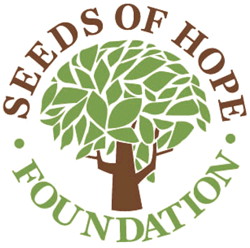Frank Touby –
A bold initiative to serve both as a fund-raiser for needy individuals and worthy organizations and as a “drug-free, booze-free” currency good only for food-and-necessities, the Toronto Dollar is in dire straits.
This is somewhat of a sad story but there will likely be a positive, perhaps even glowing future for the community currency.
It’s volunteer board of directors met last month to discuss closing the organization and abandoning the project.
Started with a grant from famed Canadian author Joy Kogawa acting, she says, on a bequest from her father with instructions to “do something good with it,” the community currency began in December 1998 and would have been called the St. Lawrence Dollar. The bills would be printed by the Canadian Mint and handled in a judicious bank-level manner by knowledgeable volunteers. An array of Canadian celebrities—many of them friends and fans of Kogawa—were on board with the concept and a high level of expertise was recruited to the effort. It seemed to have a glowing future.
The idea was to focus on good works in the immediate neighbourhoods in the St. Lawrence Market area and that local merchants would be able to trade it among themselves without the necessity of redeeming their St. Lawrence Dollars for 90 cents on the dollar if they sought to merely cash them in.
St. Lawrence Market merchants were on board with it, thanks to revered former superintendent Jorge Carvalho (recently ousted without cause from his post by a new city-hall bureaucratic regime in the Real Estate division). Carvalho was a leading proponent of the community currency and remains so to this moment.
Former North York Mayor Mel Lastman, by then Mayor of the reluctantly amalgamated then-new City of Toronto, showed up at St. Lawrence Market for “the first time in my life” at a customer appreciation night where he was to deliver a speech and, when told of the St. Lawrence Dollar, pronounced: “A St. Lawrence Dollar? Why not make it a Toronto Dollar?”
St. Lawrence Dollar organizers delightedly assumed he would pay more than lip service to the concept and they dutifully renamed their local currency the Toronto Dollar, expanding its presumed reach far beyond the small community currency originally envisioned for starters.

It was an understandable optimism, but they were counting on a guy who spins out gobbledegook like nooooobody else. Stuff like his dread of visiting Africa for fear of a 1940s Saturday Evening Post cartoon spectacle of being boiled in a pot with spear-wielding cannibals standing around kibitzing.
Lastman did show up at the Market one more time after that to say a few words, gobble some noshes and depart for home in North York.
So the Toronto Dollar remained localized in St. Lawrence, with an extension into Gerrard Square that eventually ended when new management took over that mall.
St. Lawrence Market merchants were the first and greatest boosters of the Toronto Dollar, with all accepting them in exchange for merchandise. Rather than using them as currency, at least among themselves, they mainly redeemed them at a 10% loss.
The 10% was to be given to local charitable activities, but that wasn’t the purpose of the currency, explains Kogawa.

She notes that the idea of a community currency is for it to be used in place of Canadian dollars when presented to a merchant, who ideally would use Toronto Dollars to pay as many suppliers as possible.
That wasn’t immediately possible in most cases, since Market suppliers come from everywhere and the new Toronto Dollar was still quite localized. There weren’t enough local merchants signing onto the program to entice Market merchants to shop with rather than cash in the Toronto Dollars their customers used as payment.
In the community currency plan, charitable organizations would pay their volunteers in Toronto Dollars that are redeemable for food and other necessities in businesses that also would use the currency to pay some of their help.
But the critical mass of users was never reached to enable the new community currency to work as intended.
However, 14 years later, as the somewhat demoralized Toronto Dollar board discusses the prospect of folding the operation, redemption may be at hand.
The Seeds of Hope Foundation, a multifaceted direct-action Downtown charity, has stepped in with a plan that might not only preserve the Toronto Dollar, but enable it to be used as originally intended and broaden its reach.
The foundation’s mission is to “provide places of hope and belonging for those at a crossroads in their lives. Places where people find their gifts and abilities through communities of compassion and caring.
“Our transitional homes, safe places, and creative spaces enhance livelihood, learning, and social opportunities.”
Their many volunteers and clients would be paid in Toronto Dollars called “Thank You Gifts” and the organization with its many Downtown locations has the connections with restaurants and other businesses that may be willing to accept a community currency and use it to further pay many of their own workers in part or even in whole.
Seeds of Hope, which has used Toronto Dollars in the past for its volunteers and clients, might be able to create the critical mass and a tipping point for Toronto Dollar to become a viable community currency.
In the words of its executive director, Kimberly Curry, who is sold on the currency because it can’t be used to buy drugs: “I would hate to see this thing die.”
 TheBulletin.ca Journal of Downtown Toronto
TheBulletin.ca Journal of Downtown Toronto

